Arizona Republic stories that made a difference in 2022
After 2020 and 2021, we thought 2022 might bring some return to normalcy. And, in fact, some things did return to the way they were before COVID-19 disrupted our schools, our workplaces and our lives.
More of us returned to the office. Students are back in the classroom. Hospitalizations are down, though certainly persistent.
But elections provided a roller coaster of news about local and national candidates. Food and housing costs and inflation were higher than they’ve been in decades. In fact, Phoenix led the nation in double-digit inflation rates for several months.
Through it all, journalists for The Arizona Republic and azcentral.com tracked the changes, provided solutions and kept tabs on election-year shenanigans. Along the way, we also told you about some of the best new restaurants to open in the Valley and — unfortunately — some of the old favorites that didn’t make the transition out of lockdown.
Core to our mission here at The Republic is making our community — our state — a better place for all who live here. Through a daily texting service, we provided information on COVID numbers and where to get booster shots. Grant-funded reporting on affordable housing helped renters and buyers alike navigate the expiration of federal assistance and anti-eviction programs.
Two Republic-led initiatives specifically helped nonprofits that provide service for our neighbors in need: In the spring, 164 charities statewide shared $1.8 million raised through our Season for Sharing campaign. Grants went to help struggling families, older adults and teachers and students. And in the summer, 16 charities shared more than a half million dollars raised through A Community Thrives with direct grants and crowdfunding.
The Arizona Republic staff is committed to making the place we live, work and play better for all. Here are some stories that made a difference in 2022, told by our journalists.
Analysis shows how Republican voters helped Democrats win
Once again, Arizona was the center of national political interest in 2022, with a trio of 2020 election deniers backed by former President Trump running in races that would determine control of state government, the U.S. Senate and future Arizona elections.
Election officials in the state’s most populous county temporarily botched Election Day vote counting in nearly a third of precincts, leading the Trump faction to claim a stolen election when their candidates lost.
Stolen? Not so, The Republic proved.
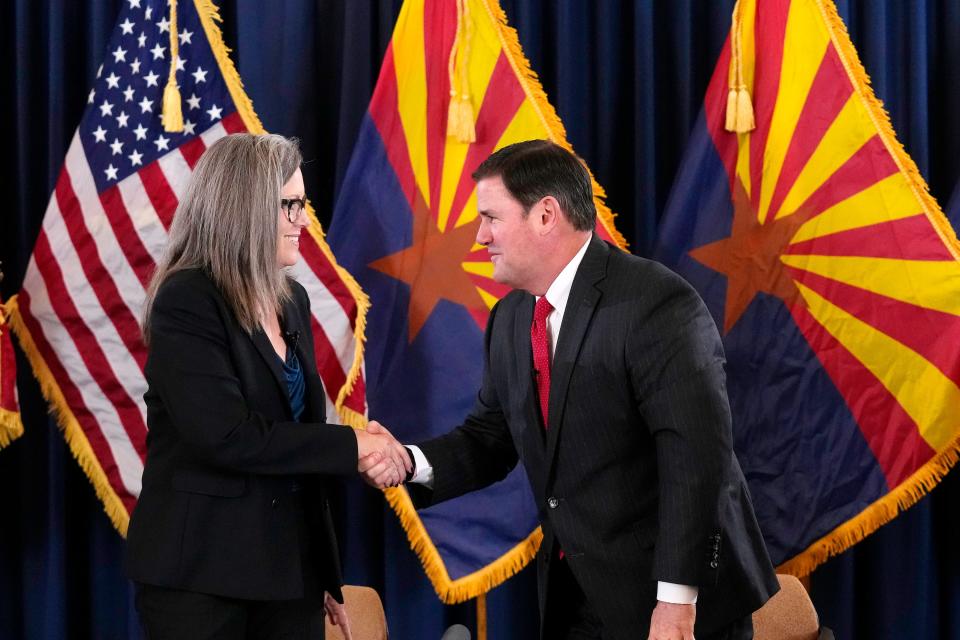
In clear, vivid precinct-level examples and with an illuminating map, published two weeks after the election, reporters laid out that Republicans had more than enough votes to win — but didn’t — because their top-tier candidates fared poorly with a slice of GOP voters in Maricopa County, which has a large majority of the state’s voting population.
Ronald J. Hansen's and Caitlin McGlade's analysis found areas of Maricopa County that voted reliably Republican in other races were selecting Democrat Katie Hobbs on their ballot for governor instead of Republican Kari Lake, Democrat Adrian Fontes as secretary of state over Republican Mark Finchem and, in smaller numbers, Democrat Kris Mayes over Republican Abe Hamadeh for attorney general. Hansen and McGlade analyzed precinct-level data on the outcome of these and other big races, along with voter registration data grouped by the precinct level to see where Republicans were registered in greater numbers than Democrats.
They were able to show how Republican state Treasurer Kimberly Yee performed better than all three higher-profile Republican candidates, winning with a much wider margin over her Democratic challenger. The message was clear: Many Maricopa County Republicans had rejected the Trump-backed Republicans — ultimately handing three key political positions to Democrats.
One national Republican operative called it “a great story” that needs to be understood as a wake-up call to his party to run more electable candidates in the future.
The analysis was well received on social media. Paul Bentz, a public opinion and research strategist, called our story an "incredible read." Many other readers pulled out excerpts of the story and started discussions. One reader tweeted our story and asked, "What happens when your party candidates go full MAGA? They lose. Never go full MAGA."
Whether the findings will inform future campaign decisions is yet to be seen, but this analysis can be used as a benchmark for coming elections.
The article built on an earlier story that examined where Trump’s pull was the strongest in the same county. These were the “mega MAGA” areas where Republicans figured to hang their biggest vote margins – and helped identify where the GOP brand in the Trump era seems weaker.
New law cracks down on Arizona's massage therapists
A bill signed into law by Gov. Doug Ducey in June requires Arizona massage therapists to go through more thorough criminal background checks before getting their work licenses. Beginning in January 2023, they’ll have to have fingerprint clearance cards for initial licensure and license renewal.
The bipartisan bill, sponsored by Rep. Jennifer Longdon, D-Phoenix, comes as a result of The Arizona Republic's five-month investigation into sexual abuse complaints against massage therapists. The Republic's investigation found that the Arizona State Board of Massage Therapy gave many therapists second chances when they were accused of fondling or sexually abusing their clients. That put customers in danger with little protection.
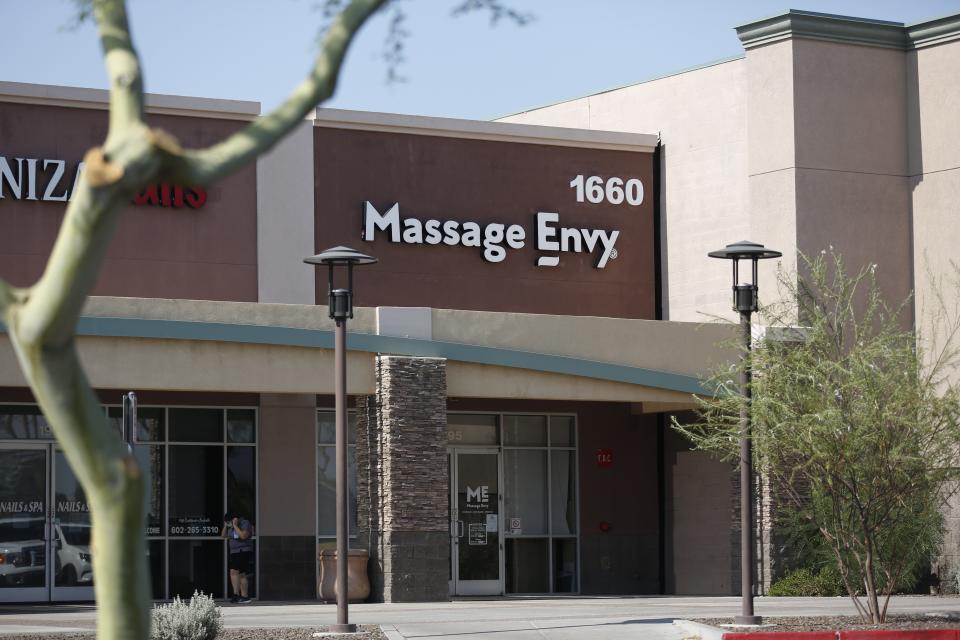
Under the fingerprint clearance process, the Arizona Department of Public Safety reviews a person's criminal history. People who have been convicted of certain crimes are ineligible to receive fingerprint clearance cards. The fingerprint clearance cards will be combined with the board's current criminal backgrounding check, where the board also learns important details about an applicant's criminal history, including the original offense the person was charged with and whether the person accepted a plea agreement for a lesser offense.
The new law comes after Ducey replaced the entire Massage Therapy Board following The Republic's investigation. The governor said in a statement at the time, "It’s critical the State Board of Massage Therapy protects massage clients, especially those who are in a vulnerable position.”
Congressman: No more foreign companies draining AZ groundwater
An Arizona congressman introduced legislation to impose a burdensome tax on foreign governments on the sale and export of water-intensive crops in states like Arizona that continue to battle prolonged drought conditions. The move to protect water resources and land leases from foreign companies comes during a time when the state is experiencing its most severe drought and lawmakers are scrambling to find ways to mitigate the state’s water crisis. The Domestic Water Protection Act of 2022 would impose a 300% excise tax on foreign manufacturers, producers and importers of water-intensive crops in areas experiencing severe, extreme, or exceptional drought conditions.
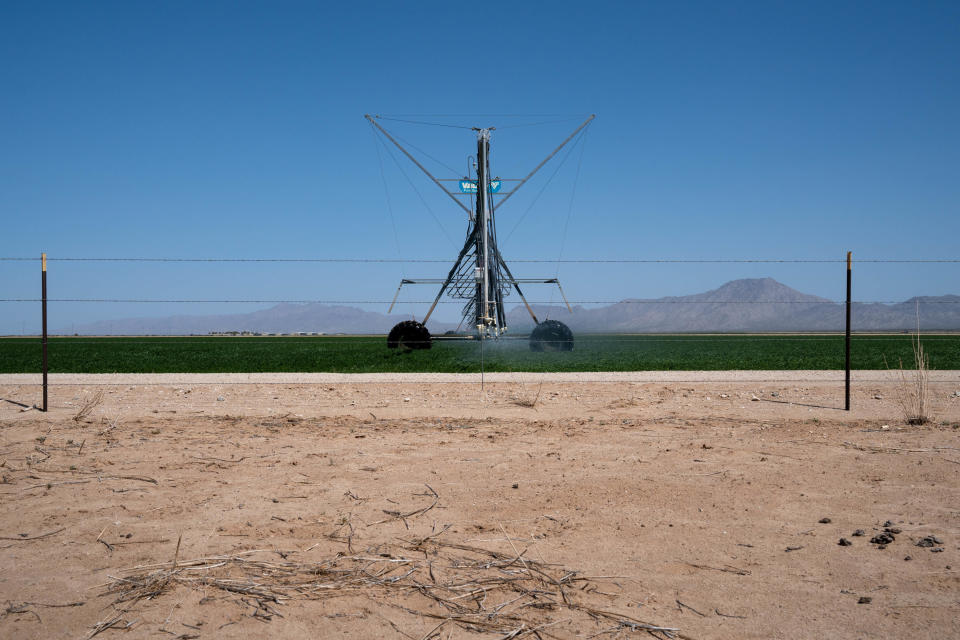
The bill from Rep. Ruben Gallego, D-Ariz., specifically targeted Fondomonte, a Saudi company that uses Arizona’s groundwater to grow alfalfa to ship to the Middle East.
The Arizona State Land Department has come under fire after a Republic report detailed the arrangement that allows Fondomonte to lease thousands of acres west of Phoenix to grow water-intensive crops year-round for export to Saudi Arabia. According to records, the Saudi company pays below-average market costs for each acre of land and is able to pump unlimited amounts of groundwater at no cost. A State Land Department report estimated the company is pumping roughly 18,000 acre-feet each year from groundwater earmarked for future metro Phoenix, enough water to supply 54,000 single-family homes. While this bill is not limited to Saudi Arabia, Gallego said it is necessary to level out the disparity between foreign companies and countries from leasing water that he said ends up being cheaper than domestic producers while straining aquifers and using the state’s limited groundwater.
After The Republic published its story, former Gov. Bruce Babbit called for the Saudi company to pay $5.42 million a year for each of the last seven years. He says that's what the water was worth.
The proposed legislation to heavily tax foreign governments, including Saudi Arabia, came after OPEC and oil-exporting allies announced plans to cut oil production by 2 million barrels per day. “Saudi Arabia has stated their intention to rob Arizonans at the gas pump, but they are also already stealing our water,” Gallego said in a written statement. “We need to act to stop our state from being sucked dry by a nonsensical agreement.”
Governor touted removal of red tape; investigation shows otherwise
Republic reporters led by Stacey Barchenger dug through tens of thousands of pages of records documenting administrative rulemaking in Arizona to reveal that Gov. Doug Ducey not only had not met one of his key campaign pledges to reduce regulations, but instead created two new rules for each one he’d eliminated. The reporting uncovered Ducey’s misleading statements on the issue while highlighting how little regulatory reform has to do with economic growth.
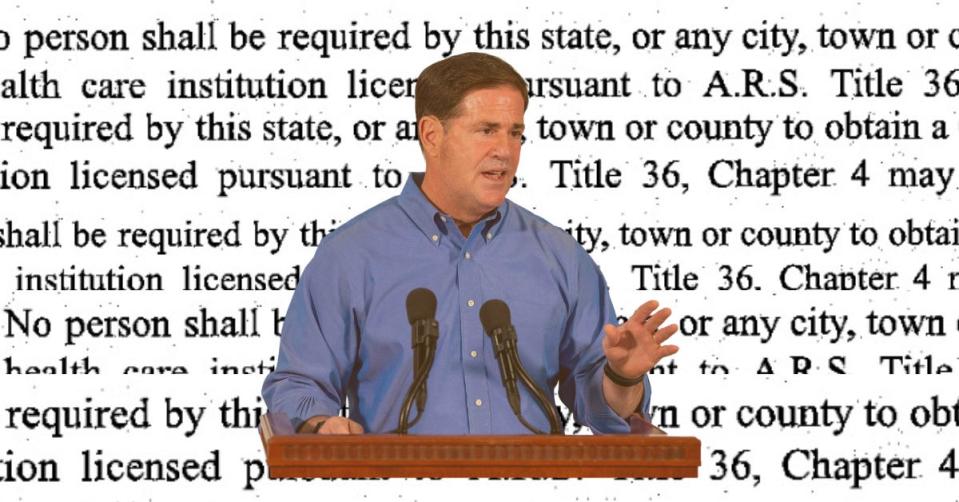
Ducey’s allies defended the governor after the story was published, and readers responded, too, calling the reporting “capital J journalism” and “not only a ray of light for truth but also a rainbow of full-spectrum reporting.”
US senator asks feds to investigate after monkey deaths at Valley lab
U.S. Sen. Cory Booker called for the federal government to investigate why the University of Washington was given more grant money despite problems revealed by a series of Republic stories that showed higher-than-expected rates of sickness and death at its monkey farm near Mesa.
Booker wrote a letter to Health and Human Services Department Secretary Xavier Becerra asking why the National Institutes of Health renewed UW's $65 million five-year grant funding "despite documentation of multiple unresolved, serious issues."
The New Jersey senator's letter said those issues included "failure to maintain biosecurity — which threatens not only public safety but has also compromised the health of the monkeys and data from studies using them — repeated animal welfare violations, financial issues with taxpayer funds, and failure to comply with both state and federal laws.

"Detailed documentation of these failures and violations was exposed in a series of articles by The Arizona Republic," Booker's letter said. "I ask that the Department of Health and Human Services investigate the oversight and approval of this grant."
The Republic’s investigation revealed that Valley fever, a common flulike illness caused by a fungus from the soil in the desert around Phoenix, ran rampant among the macaque colony and killed at least 47 monkeys during the past eight years. The illness at the Arizona facility also threatened the results of tens of millions of dollars in research aimed at finding cures and vaccines for some of humankind’s most serious viruses and diseases — AIDS, HIV, hepatitis, Zika, Ebola and even COVID-19. That's because Valley fever can come back when the monkeys' immune systems are suppressed during research, potentially compromising results.
The Republic's investigation also found:
• The monkeys at the Mesa breeding facility have been drinking well water tainted with perchlorate, a contaminant leached from ponds containing rocket fuel runoff from an adjacent defense contractor. Despite recommendations that a water treatment system be installed at the breeding facility in 2016, no such precaution has been taken.
• The primate center's long-term financial situation is in disarray, according to federal reports. Staff turnover has been high. Morale remains low as staff has reeled from years of poor decision-making and an embarrassing public sexual harassment scandal.
• The primate center has run afoul of state and local regulators. It was cited for failing to alert Washington state regulators that macaques imported into the state had Valley fever. And it has been cited by federal regulators for conduct detrimental to animal welfare. At least five monkeys have died since 2017 because of poor care or improper oversight.
Related:Republic reporter wins national award for series on sickness, death at monkey colony
County attorney's alcohol use, missteps by office brought to light
A 2022 Republic investigation into the Maricopa County Attorney’s Office led to the resignation of the elected county attorney in the nation’s third-largest prosecutorial agency. The stories focused on County Attorney Allister Adel, who was absent from office for weeks at a time and failed to represent the county on key legal issues. The Republic found that hundreds of cases were being mishandled. Staff attorneys and other elected officials publicly covered for her and excused her conduct as COVID-related.
Reporter Robert Anglen set about piecing together the truth, reported in a series of stories over two months. In this drumbeat of coverage, he pushed back against the official narrative and forced county supervisors to acknowledge their concerns.
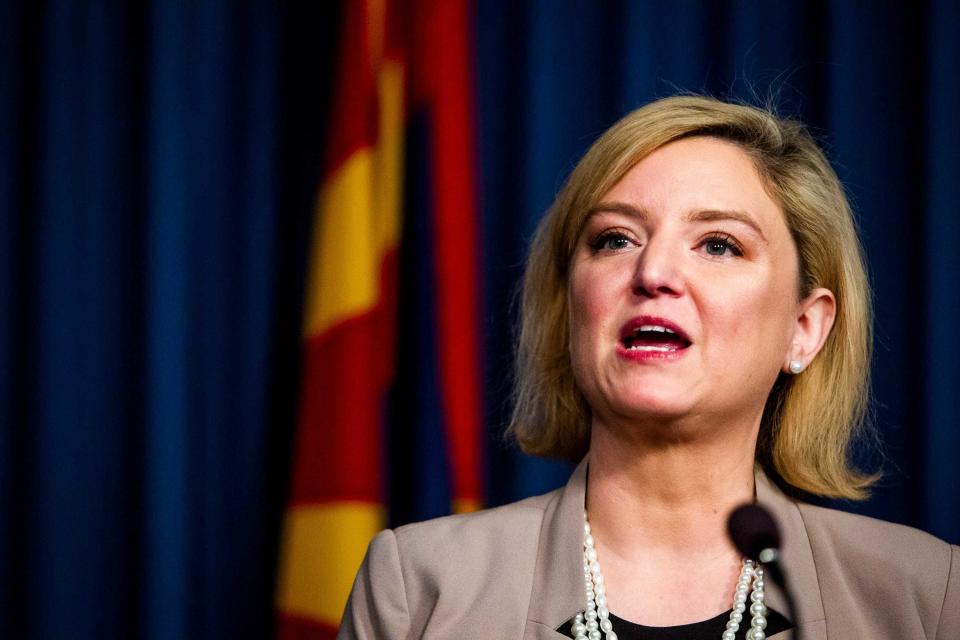
When Adel countered that she was in recovery for her drinking and was capable of running the office, Anglen caught her in a series of lies. As his stories gained momentum, Adel began retaliating against staff and made public statements that revealed the depth of the turmoil in her office. Adel tried to derail Anglen’s coverage with a letter from her medical team complaining that the publicity was affecting her recovery.
Anglen obtained hundreds of public records about the county attorney’s operation that revealed deputy county attorneys forgot to file charges in hundreds of cases. That led to a public backlash from the politicians who had protected Adel. The governor called her out. The state Attorney General’s Office called for an investigation. Adel announced her resignation. But the story didn’t end there.
On what would have been Adel’s last day in office, Anglen found Adel was admitted to a hospital under her maiden name. She never left, and she died about three weeks later.
Legislators call for change after investigation into prison labor
“Forced prison labor is nothing more than modern-day slavery, and our state's growing reliance on this workforce is irresponsible, immoral and inexcusable,” said state Sen. Martin Quezada, D-Glendale. “Any public official with the duty to protect taxpayer dollars should be rethinking the way we appropriate money and the accountability standards that are in place.”
Over 15 months of reporting, Arizona Republic and KJZZ News reporters gathered and analyzed more than 11,000 documents related to prison labor. Additionally, when the Arizona Department of Corrections refused to provide it, they downloaded tens of thousands of public prisoner profiles about prisoners.

The finding: During the past 20 years prison labor has become ubiquitous across the state. By law, Arizona forces men and women incarcerated in its public and privately operated prisons to work. While the vast majority work inside the prison making 10 to 35 cents an hour, there is also an elite force of about 2,000 prisoners who work for Arizona Correctional Industries, which sells their cheap labor to private companies.
The five-part series revealed the detrimental effects of what happens when a state exploits some of its poorest people. The investigation also challenged some of the Department of Corrections’ core statements about prison labor in the state, including how the jobs it offers through ACI work programs are the state’s best tools to reduce recidivism.
Raúl Grijalva, a congressman representing Arizona's 3rd District, said the investigation showed the state prison system was working against its own mission.
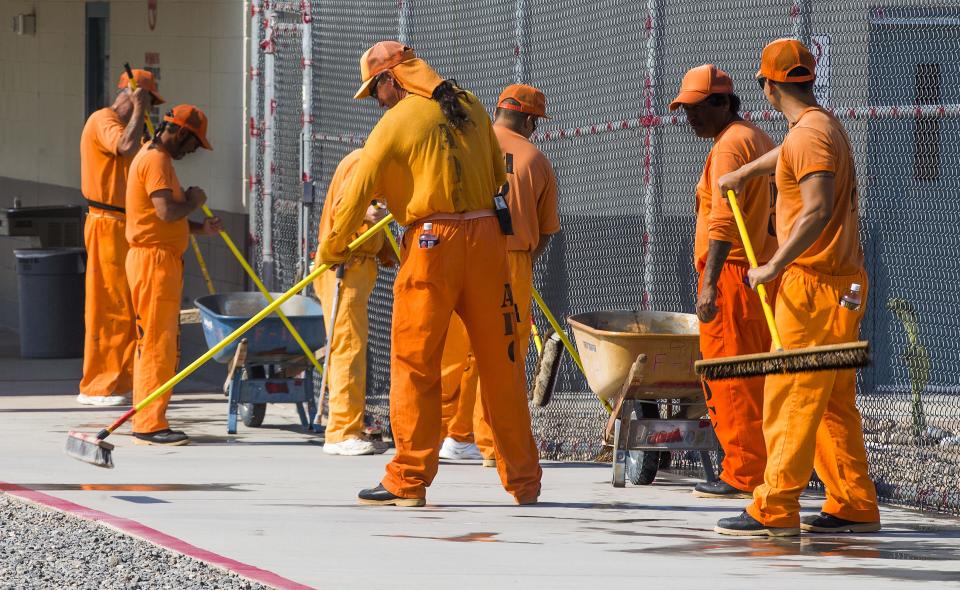
“Their focus is to keep recidivism rates high and maintain the mass incarceration crisis that disproportionately impacts communities of color and immigrants to meet prison bed quotas,” Grijalva said. “This egregiously inhumane system must be completely overhauled. Instead of giving corporations taxpayer dollars to push mass incarceration, we should be investing these funds in education, job training and community programs that reduce recidivism.”
Pima County Attorney Laura Conover said the reporting showed that the prison system had become “profit-driven.”
“We must acknowledge it and remain focused on our goal of providing opportunities for the rehabilitated, not the corporations,” Conover said. “This kind of reporting sheds light on the challenges we face.”
The Republic reached out to several Republican legislators for reactions, including House Speaker Rusty Bowers and Senate President Karen Fann. The newspaper tried to contact other Republican lawmakers with prisons in their districts, and state Rep. Walt Blackman, who has been a critic of the Arizona prison system, and sponsored bills that would provide greater oversight of the Department of Corrections, Rehabilitation and Reentry. None responded.
Maricopa County Attorney Rachel Mitchell did not respond to requests for comment. Nor did the Rand Corp., Goldwater Institute or the Cato Institute.
Related story:Private companies found using immigrant labor, with the help of Arizona prisons
Caroline Isaacs, executive director of Just Communities Arizona, said the investigation's findings are “further proof that incarceration in Arizona is not really designed or intended for rehabilitation.”
“What's more concerning is that it appears to be the opposite — that recidivism is actually incentivized,” Isaacs said. “Companies, institutions, and even small towns are dependent on this cheap labor source. This raises the frightening notion that the state's proclivity for long sentences for relatively minor offenses may be motivated in part by sheer greed. At the very least, it may explain why the state is so resistant to the sensible sentencing reform efforts that have been adopted in many other states, including those with conservative leadership.
“The blatant commodification of human beings revealed in this investigation is deeply disturbing,” she said. “This report reveals another shift in the perception of incarcerated people from human being to 'profit generator' or even a 'product' themselves, to be traded or leased out to the highest bidder.”
More transparency, action after 'Fentazona' series
The Republic's four-day "Fentazona" series gave readers an overview of how fentanyl is increasingly to blame for drug overdose deaths in Arizona and explained why public awareness is crucial to reducing fatalities.
The series included a story about ways to prevent growing numbers of fentanyl deaths in those younger than 18, a solutions story about a Phoenix gym that's helping people give up fentanyl through physical fitness, a watchdog story about how Arizona is going to use its $542 million opioid settlement money, and a list of resources where individuals and families struggling with dependence may find help.

Dr. Mary Ellen Rimsza, director of the Arizona Child Fatality Review Program, praised the series for telling personal stories that are "so much more compelling than the raw data" and for highlighting a push from families to call fentanyl deaths poisonings rather than overdoses.
Since the series published, Maricopa County began posting its opioid settlement spending plan online and the organization MATFORCE, which is based in Prescott Valley, held a Nov. 12 forum to address the problem of kids buying counterfeit pills on social media, which was outlined in The Republic's series.
Investigation reveals tainted marijuana, prompts legislative vote
Reporter Ryan Randazzo, in a series of investigations in 2022, determined that some premium products were being sold to medical marijuana patients with high pesticide contamination. His investigation also showed that state health officials received a tip about the problem but didn’t issue a recall or prevent the product from going to market.
The issue drew attention from lawmakers who drafted and introduced legislation to close loopholes allowing this to happen, but the bill did not pass in the 2022 session.
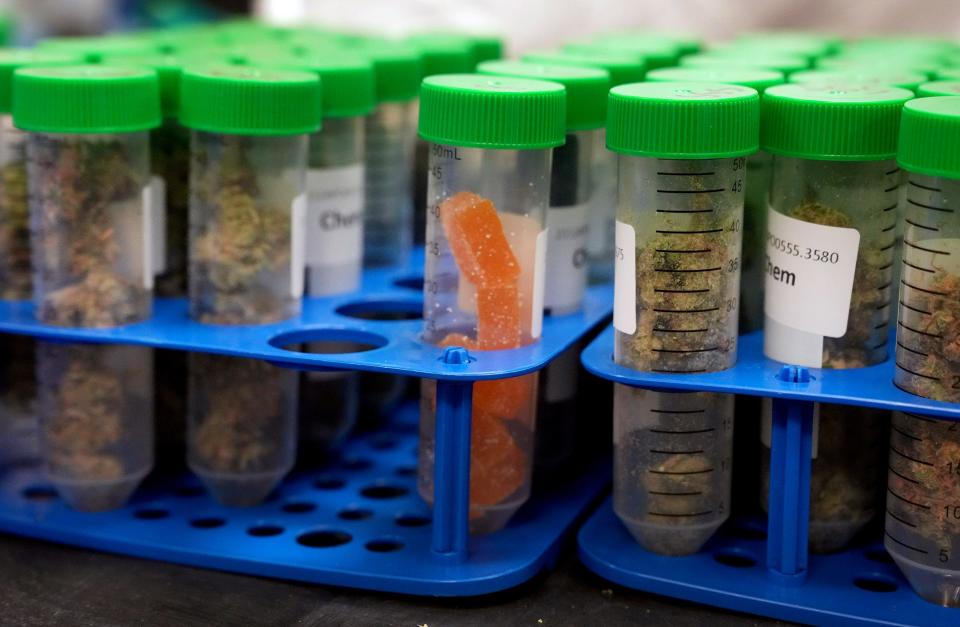
As a follow-up later in the year, Randazzo tested multiple marijuana products for potency and found companies, including one certified testing lab, that were egregiously inflating the figures so they could sell marijuana at higher prices.
Randazzo turned his attention to oversight of the cannabis industry, which exploded in Arizona after voters approved recreational marijuana. He initially determined the contamination after purchasing marijuana from licensed dispensaries in the state and having it tested for pesticides or potency.
The issue also got the attention of the Society of Toxicology, which invited Randazzo to speak at its spring conference in Nashville.
Keep reading:Proposal seeks to make cannabis products safer. Why do Arizona dispensaries oppose it?
Arizona tribes assert voice in managing region's water supply
When Arizona and other Western states divided up the Colorado River 100 years ago, they did so without input from Indigenous people who had used the water long before settlers arrived. For years, the tribes fought for any drop of water, but were forced in many cases to give up agrarian lifestyles and resort to water hauling. Debra Utacia Krol, The Republic's Indigenous affairs reporter, traced the history, examined the impact on communities and showed how tribes have worked to secure water and claim a voice in deciding how it’s used in the future.
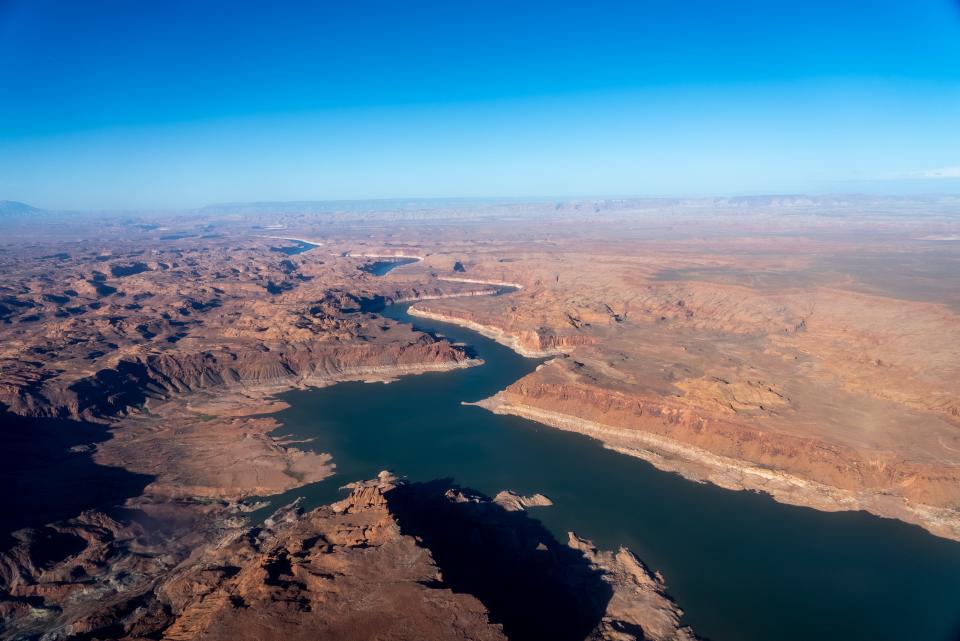
Tribes’ willingness to act collectively to deal with decreased flow from the Colorado River took on extra urgency when a Bureau of Reclamation study found water levels in Lake Mead were expected to drop below 1,075 feet, which triggered the first round of cuts in Colorado River water delivery to Arizona.
Tribes teamed up to share the burden with the goal of avoiding further reductions in river allocation.
The emerging role tribes play in conserving and managing water in the Southwest shows their influence as senior rights holders and their determination not to be left out again or left to talk to each other instead of engaging with water managers.
As the drought worsens, tribes are increasingly looking to conservation to preserve their water for farming, homes and economies. Tribes with long agricultural heritage are particularly concerned.
Yearlong project documents Colorado River on brink of collapse
Relentless drought and climate change are pushing the Colorado River to the brink of collapse.
In 2000, Lake Powell and Lake Mead, the two largest storage reservoirs on the Colorado River, were full. Twenty years later, an unprecedented drought has drained them to barely one-quarter capacity and Arizona has been forced to reduce its use of the river, leaving farmers in one county with empty irrigation ditches.
As states try to find a solution, Republic reporter Brandon Loomis spent the year traveling up and down the river, looking at why it's near collapse and what the 40 million people who rely on it will do if conditions don’t improve.
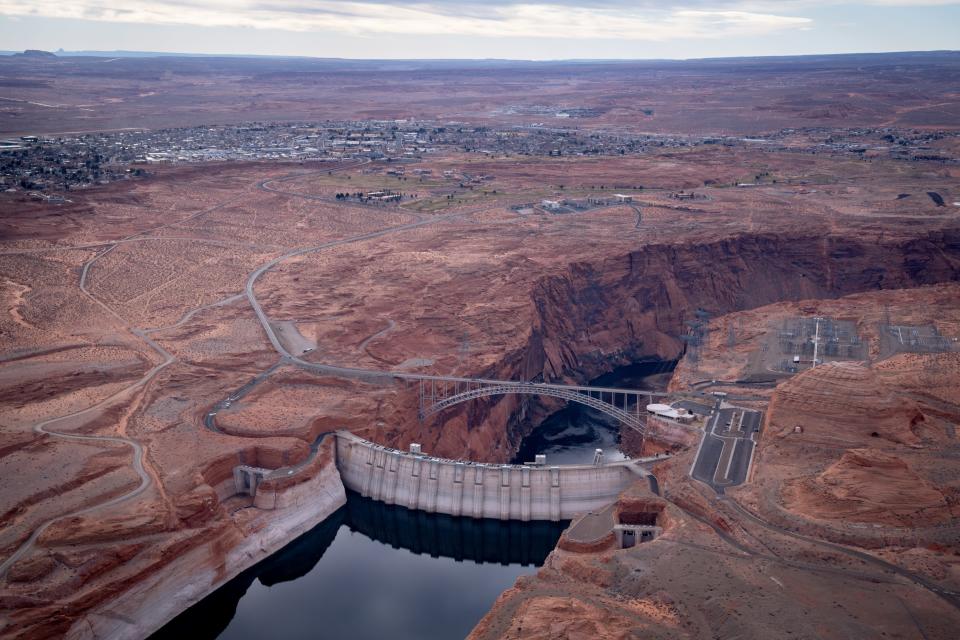
Among his findings:
If the snow that melts up north to replenish the reservoirs is lower than expected this winter, water managers warn levels will dip below Glen Canyon Dam’s hydropower intakes by the end of 2023.
The National Park Service has spent several million dollars extending concrete boat ramps in Like Powell to enable access for houseboats. But it won’t likely be enough to support the park’s congressional mandate to manage boat recreation. The park service is applying for $26 million in disaster funding to help.
More than 4 million Americans who buy Glen Canyon Dam’s power stand to lose as the water recedes. Consumer-owned utilities from Arizona to Wyoming will need to add likely costlier solar, pumped hydro or small nuclear plants to the mix. Some projections show levels dipping below those needed for power by 2024.
Keep reading:As the Colorado River shrinks, Arizona looks at water recycling, desalination, taller dams
Also in our environment coverage:
New weekly series documents how we’re adapting to climate change. Climate change and its wide-reaching effects have become one of the most important stories of our time and there are no shortages of gloomy predictions about how rising sea levels, rising temperatures or shrinking water supplies could affect the lives of millions of people. But there are fewer stories about how people are adapting to climate change, often with success, or about the emerging ideas to prepare for changing conditions. The Republic created a new beat focusing on stories that go beyond the studies and the predictions and help readers better understand what they can do in the coming years. The stories by reporter Joan Meiners appear each Wednesday on azcentral.com and anchored on Page 2A of the print newspaper. They have explored a range of topics, including how a group of moms/climate researchers approach the issue, greenwashing, the myths of carbon footprints and the unexpected connection between Antarctic fish and Arizona water.
20 years later, efforts to restore unhealthy forests remain unfulfilled. In 2002, the Rodeo-Chediski Fire burned nearly half a million acres of Arizona’s ponderosa pine forests, ushering in the first mega-fire, but not the last. Poor management decisions during the middle of the 20th century had altered forests, leaving them vulnerable to huge wildfires just as drought and climate change created the right conditions. The Republic’s environment team spread out across the burn area of the Rodeo-Chediski to look at what has happened to the forest, to the people who live there and how forest managers are adapting to hotter, drier conditions. The team found success stories, but also cause for concern as efforts to restore unhealthy forests faltered.
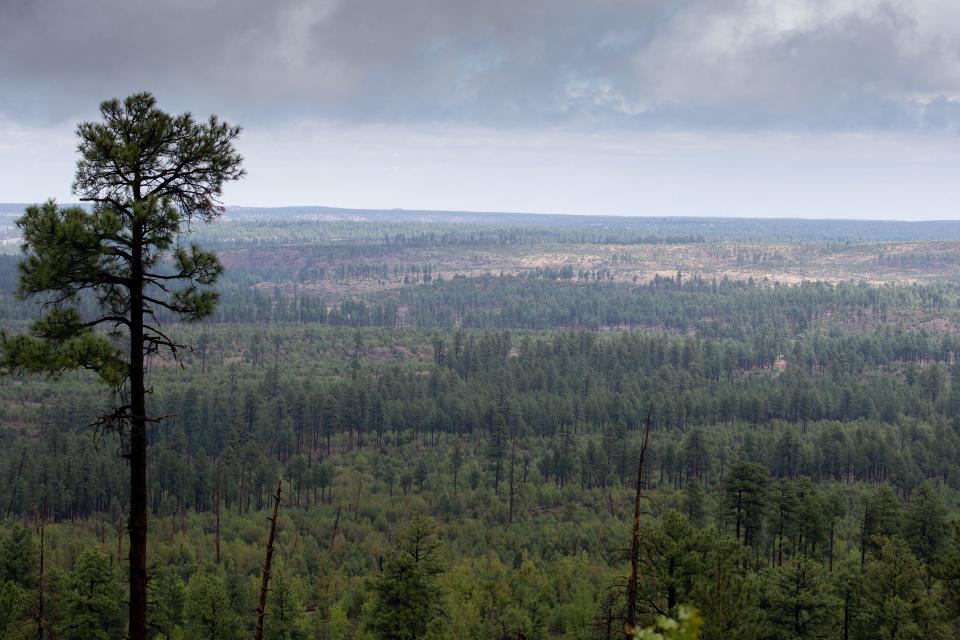
Republic inquiry saves Arizona from losing $88M in renter aid
Arizona found a way to keep $88 million of rental assistance after The Republic flagged the state’s lagging spending and possible loss of funds. The state voluntarily redistributed the money for tenants and landlords hurt by the pandemic in metro Phoenix and Tucson.
The money was a chunk of the $315 million the Arizona Department of Economic Security received in federal stimulus money to help tenants in rural parts of the state.
Arizona had spent just 10% of its federal funding to help renters stay in their homes, and a federal rule required that triple that rate had to be spent by a deadline.
“While considering the disproportionate funding and demand in other jurisdictions, the Department voluntarily reallocated $88 million of its funding to other jurisdictions across the state,” DES spokesperson Tasya Peterson said.
The feds did pull funding from some other U.S. cities and states. Delaware, Idaho, Montana, South Dakota, Vermont and West Virginia lost rental aid money that was redistributed by the U.S. Treasury Department to other states, including California, New Jersey and New York.
Keep reading: Metro Phoenix evictions climb again, judgments against renters highest since Great Recession
Podcast: 10 years on, use of force still challenging at border
For years, The Republic has been following the aftermath of an Oct. 10, 2012, cross-border shooting of a Mexican teen in Nogales, Sonora, including the prosecution of the Border Patrol agent involved and his eventual acquittal.
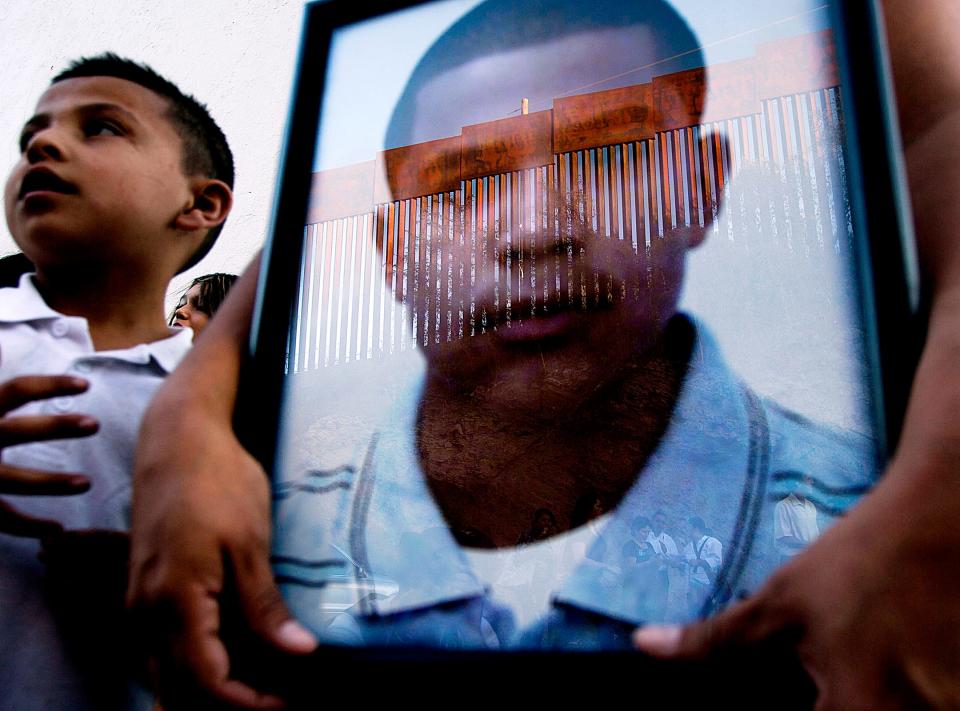
Azcentral.com's 2022 podcast “Rediscovering: Killed Through the Border Fence” examined the shooting and the ripple effects — personal, emotional and institutional — after border agents use excessive or deadly force. The four-episode series detailed a family’s quest for justice through the U.S. court system, and how the families of individuals killed by border agents rarely get the chance to hold those agents accountable.
The project also highlighted how oversight of Border Patrol’s deadly use of force practices remains a challenge despite some initial reforms after the 2012 shooting. The podcast was featured by Futuro’s Latino USA and received positive feedback from listeners, including from those who attended the event marking the 10-year anniversary of the shooting of José Antonio Elena Rodríguez and who have been following the case closely.
'Point of the spear':Families look beyond U.S. courts to hold border agents accountable
Two reporters' work recognized by National Press Foundation
Republic reporter Debra Utacia Krol and photojournalist Cheryl Evans won the 2021 Feddie award from the National Press Foundation for their multimedia series “Sacred Spaces.”
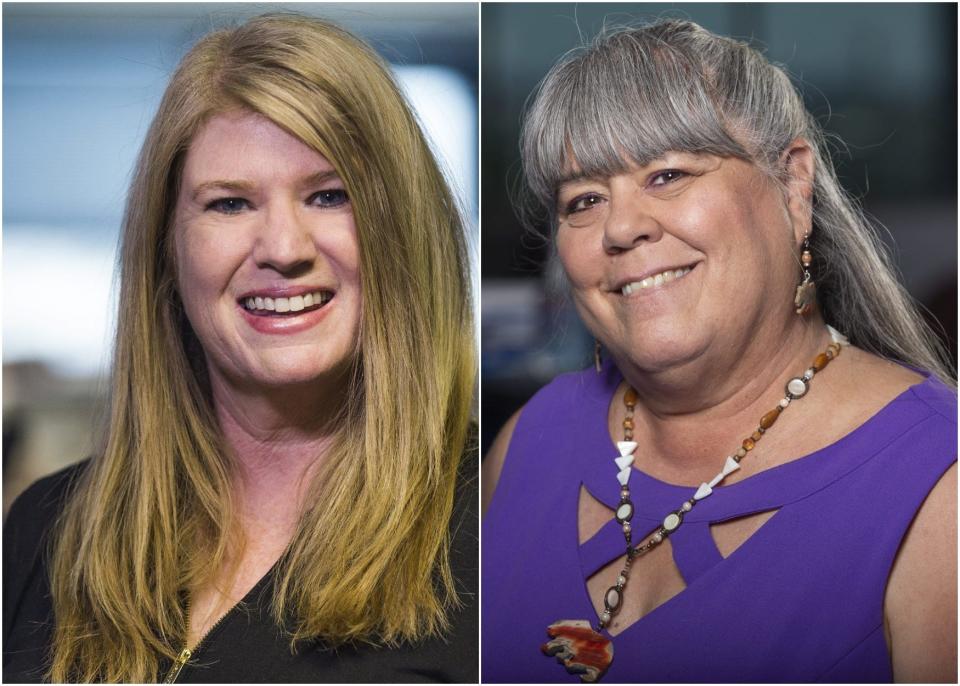
The award honors outstanding reporting about the impact of federal laws and regulations on local communities.
Krol, who covers Indigenous affairs for The Republic, spent a year researching the struggle Indigenous peoples face to protect sacred sites that lie outside tribal reservation borders. She and Evans traveled across the Southwest to sites held sacred by the Apache, Havasupai, Mojave, Quechan and other Native peoples and documented their fight to preserve the sites.
The stories, videos and still photographs examined a complicated web of federal laws and regulations related to Indigenous sacred sites on public lands, leading judges to praise the "compelling presentation of an undercovered and highly complicated issue."
The series also conveyed an engaging narrative about the meaning of sacred sites — mountains, springs, groves of trees, rock formations or petroglyph sites — and how Indigenous peoples consider them similar in status to a church, synagogue, mosque or temple for people of other faiths.
“Native peoples do not appear to have the same rights to practice religion as other peoples in the United States,” Krol said. “And these are issues that we as journalists need to write about.”
Reagor recognized for coverage of housing and poverty
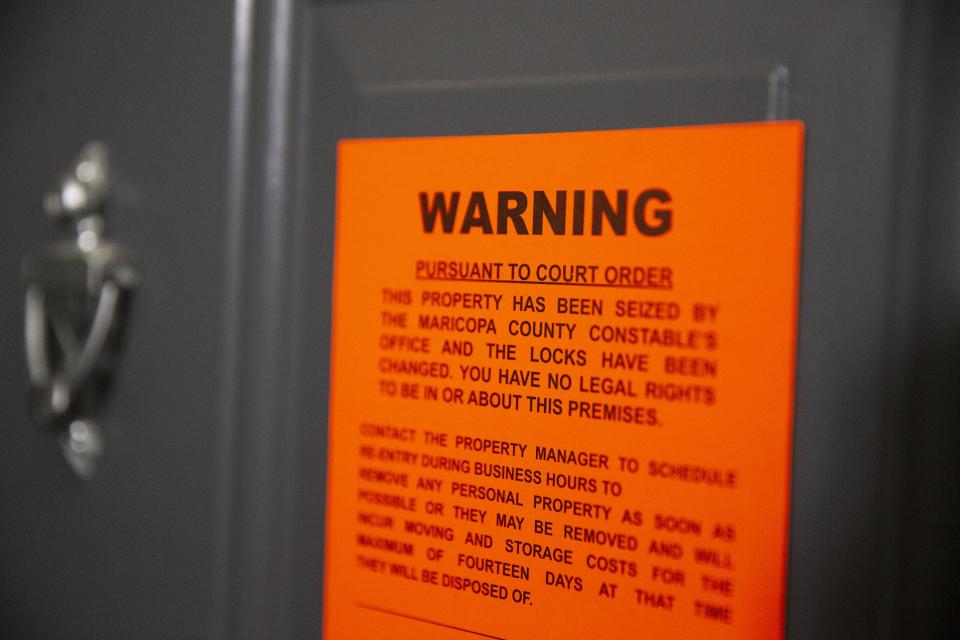
Senior real estate reporter Catherine Reagor was honored by the poverty-relief nonprofit Wildfire for ongoing coverage of Arizona's affordable housing crisis and its effects on people living in poverty.
Reagor received the organization's Media Leadership Award at its annual conference.
“This award reflects your extraordinary journalistic efforts to increase public awareness about the lives of those in our community impacted by poverty,” said Wildfire Executive Director Cynthia Zwick in a letter.
Reagor and The Republic’s housing team have reported on the rising number of evictions following the end of pandemic relief programs, the challenges of getting and using housing vouchers in metro Phoenix, and the displacement of residents in mobile home communities as land desirable for redevelopment is sold out from under them.
Opinions team coverage of elections garners praise, challenges
More than 2.5 million visitors turned to azcentral.com Opinions content to get information about Arizona’s contested midterm general election.
The editorial board took strong stances defending democracy, even printing a front-page print editorial on the day that early voting began. Voters were interested in down-ballot issues, as well, including water district candidates and judge retention.
Readers praised the content, challenged some of it and remained engaged on social media platforms and public events.
Among the reactions:
“I believe in our democracy! And feel grateful for this wonderful outcome… thanks for your wonderful article! Good job.”
“ A refreshing voice from AZ heard across the country in Maryland. Well stated!!”
“What an excellent article you wrote about Kari Lake finally meeting her match in Arizona voters. Very well done! Thank you (and I live in Florida).”
“One of the best articles I’ve read in a long time…plain and simple and to the point. Thank you for great journalism.”
“I wouldn’t call Hobbs beating Lake after a long week of counting votes and finally winning by a razor-thin margin of less than 20,000 votes (0.8%) a major rejection. And unfortunately, by the slight majority rejecting an ‘election denier,’ Arizona is now stuck with a liberal Democrat that will most likely do nothing about crime and nothing about the crisis at the border (including fentanyl flowing across and killing our people).”
“A big Texas thank you, muchisimas gracias, and congratulations to the Arizona voters. I wish Texans were as educated, informed, and smarter to equal Arizona’s voters.”
“Is anyone taking an objective look at how this election was conducted and the problems Republican voters endured on Election Day with long lines, malfunctioning voting machines, tabulators and ‘ink shortages?’”
Arizona's food culture, hidden gems get national recognition
The Republic has trumpeted the virtues of our state's homegrown restaurants for decades. After years spotlighting the dining scene's best, metro Phoenix eateries Thaily's, Bacanora, Kabob Grill N Go and Valentine got some serious shine in the national spotlight, appearing in lists of the best new restaurants in America from New York Times, Bon Appetit and Esquire.
All of the spots were covered extensively — and most of them were reviewed — by The Republic’s dining team.
Beyond the menu, however, getting to the heart of the people within that community is another goal of The Republic’s dining team.
Looking for opportunities to connect with readers across the state — and with a particular focus on communities who aren't covered as consistently as they could be — is a key component to our food and beverage reporting. Readers took notice of the efforts including:
After The Republic spotlighted a growing Mexican food strip mall scene in the West Valley, a teacher at nearby Glendale High School responded: “I teach … next door to the strip mall you covered in your article. I have been meaning to say ‘Nice work.’ Kids here never hear nice words about this neighborhood. Tennis just ended and I finally had a moment to write you ... Speaking of that, I can tell you as the girls' tennis coach the carneceria next door makes it hard to focus on the opponent when one is hungry. The smells alone should be written and bragged about. To read in The Republic that it was the best Mexican food outside of Mexico City was cool and empowering to my kids.”
A profile of a Black farming family in Yuma’s No Man’s Land brought back memories for a reader in Southwest Arizona: “Our family knew and worked with the Dees family over 40 years. No man was ever more gentle, quiet and kind than Alex Dees. When we realize the burdens he had to carry, it makes him even taller. It was a joy to hear him laugh. Thank you for a wonderful article.”

High school sports authority held accountable, helping parents
One constant in high school sports is change, a given because of the four-year cycle that brings athletes and families into and out of the arena. In Arizona, however, a state with an open enrollment policy and liberal transfer rules, change takes on a different form. The Republic sports team documented:
How transfers can create "destiny" football programs at high schools.
Elite basketball “academies” springing up that overemphasize athletics.
A movement to allow schools to compete in a so-called Open Division, regardless of conference or size, to create a single state champion.
The impact of these moves affects every parent of a high school athlete with dreams of increasing visibility and, ultimately, scholarship offers.
The Arizona Interscholastic Association regulates the moves. Republic sports reporters have documented and held the group accountable through all the shifts.
A special thank you to our funders and supporters
Past and current philanthropic funders make several projects and areas of coverage possible.
Arizona Community Foundation – Affordable housing coverage, Season for Sharing.
Catena Foundation – Reporting on indigenous issues at the intersection of climate, culture and commerce.
Flinn Foundation – Reporting on Arizona’s bioscience community.
The Pulitzer Center – Defending democracy in Arizona and on tribal nations.
Nina Mason Pulliam Charitable Trust – Environmental coverage, Season for Sharing.
Report for America – Reporting on non-urban areas of northern and southern Arizona.
Vitalyst Health Foundation – Reporting on northern Arizona.
And to The Republic's many partners
Arizona Commission for the Deaf and Hard of Hearing
Arizona Democracy Resilience Network
Arizona Newspapers Association
ASU Foundation
Black Philanthropy Institute, Arizona Community Foundation
Desert Botanical Garden
Flagstaff Business News
Hispanic Chamber of Commerce
Honoring America’s Veterans
Morrison Institute for Public Policy, Arizona State University
NexGen, Yuma
NPR affiliates KJZZ (Phoenix), KNAU (Flagstaff) and KAWC (Yuma)
Pat Tillman Foundation
Pedro Gomez Foundation
Phoenix Film Festival
Phoenix Pride
Sandra Day O’Connor Institute for American Democracy
Tempe Center for Arts
Yuma Sun
This article originally appeared on Arizona Republic: Tainted pot, election claims, prison labor, massage therapist examined

